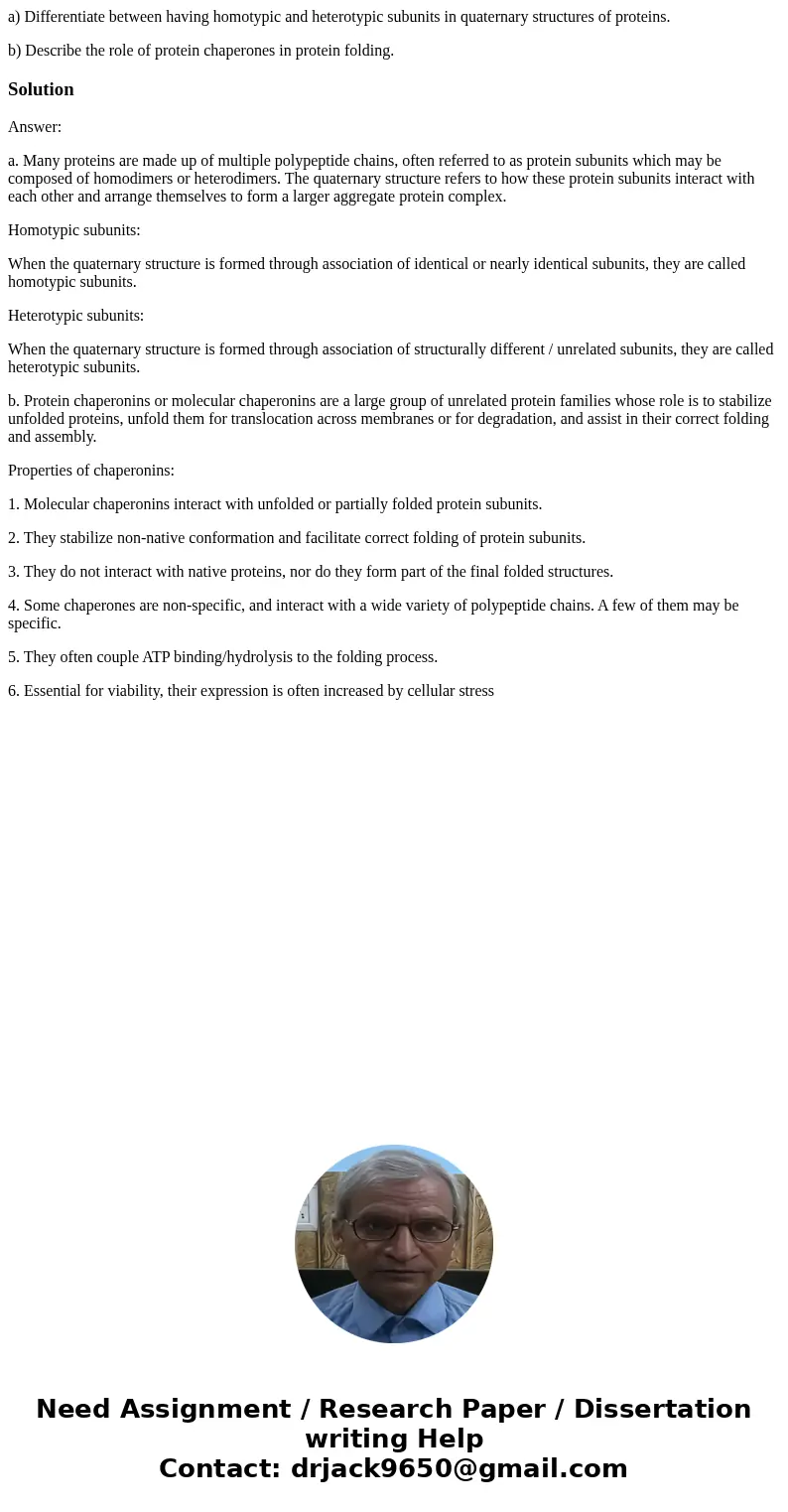a Differentiate between having homotypic and heterotypic sub
a) Differentiate between having homotypic and heterotypic subunits in quaternary structures of proteins.
b) Describe the role of protein chaperones in protein folding.
Solution
Answer:
a. Many proteins are made up of multiple polypeptide chains, often referred to as protein subunits which may be composed of homodimers or heterodimers. The quaternary structure refers to how these protein subunits interact with each other and arrange themselves to form a larger aggregate protein complex.
Homotypic subunits:
When the quaternary structure is formed through association of identical or nearly identical subunits, they are called homotypic subunits.
Heterotypic subunits:
When the quaternary structure is formed through association of structurally different / unrelated subunits, they are called heterotypic subunits.
b. Protein chaperonins or molecular chaperonins are a large group of unrelated protein families whose role is to stabilize unfolded proteins, unfold them for translocation across membranes or for degradation, and assist in their correct folding and assembly.
Properties of chaperonins:
1. Molecular chaperonins interact with unfolded or partially folded protein subunits.
2. They stabilize non-native conformation and facilitate correct folding of protein subunits.
3. They do not interact with native proteins, nor do they form part of the final folded structures.
4. Some chaperones are non-specific, and interact with a wide variety of polypeptide chains. A few of them may be specific.
5. They often couple ATP binding/hydrolysis to the folding process.
6. Essential for viability, their expression is often increased by cellular stress

 Homework Sourse
Homework Sourse